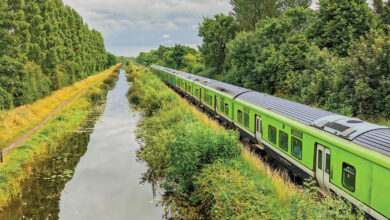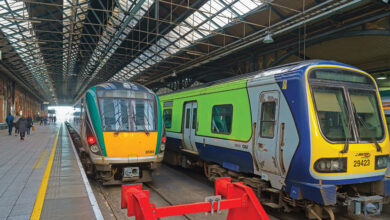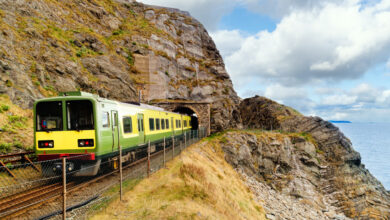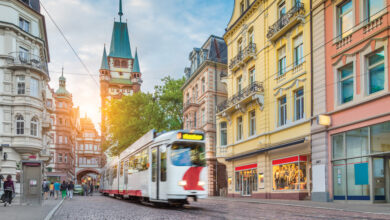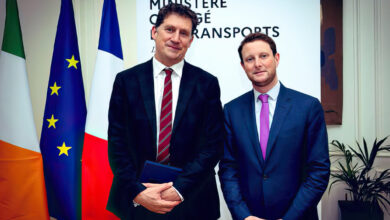The challenges facing European water services
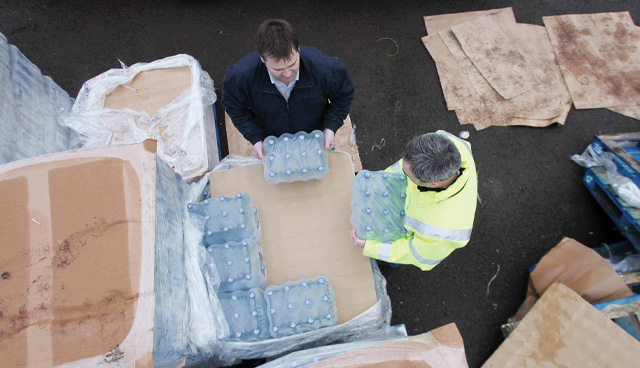
Carla Chiaretti, Head of Policy at EurEau, the European Federation of National Associations of Water Services, speaks to eolas about the challenges facing European water services, including the ‘zero-pollution ambition’ and the growing impact of climate change on water infrastructure.
EurEau is the European Federation of Water Services, created in 1975 with six founding members when the language of the association was French, hence the use of the French for ‘water’ (‘eau’) in its title. Today, in Brussels it represents 34 national organisations of drinking water and wastewater operators from 29 European countries. Its membership consists of both public and private sector bodies.
“Water services are an instrument to realise the human right to water and sanitation and by doing so, we protect public health and the environment,” Chiaretti says, adding: “When EurEau was created, it was established as a network of water professionals to exchange knowledge between experts. Then, environmental laws at EU level developed and we felt the need to establish EU water sector positions. Our experts establish these positions, and we advocate to the EU policymakers.
“Water services are very specific because they have environmental and health standards that are established at EU level, in the Drinking Water Directive or the Urban Wastewater Treatment Directive, but at the same time they are also very national because the management of these services is the responsibility of the member states. The governance of water services is very different from one member state to the next, but also within one country.”
EurEau has three priorities, Chiaretti outlines. The first is securing access to water by securing investments in water infrastructure; the second is the protection of water resources from pollution, which is key to the delivery of water services; and the third is the promotion of the sustainable use of resources “to truly be a circular economy for water”.
“In 2015, we started brainstorming on the future of water services and we identified 10 challenges up to 2030,” she says. “The first one is the protection of water resources, our heritage. I use this word because it is used in the Water Framework Directive that says that water is not a commercial product, but rather a heritage that needs to be defended, protected, and treated as such. This is very much in line with Sustainable Development Goal 6 on the UN agenda for 2030 and also the Water Framework Directive itself, which sees the protection of water resources as a fundamental tool for the delivery of water services. In fact, member states are obliged to protect resources, to take measures to avoid deterioration and limit the treatment that drinking water operators have to carry out in order to make water drinkable.”
The second goal that Chiaretti mentions is the zero-pollution ambition, a “flagship ambition of the European Green Deal”. Chiaretti states that this encompasses both old pollutants, such as those from agriculture (nitrates, pesticides) and mercury, but also the “pollutants of emerging concern” such as perfluoroalkyl and polyfluoroalkyl substances and pharmaceutical products.
“We think that this topic should be dealt with following the four principles that are enshrined in the Treaty on the Functioning of the European Union,” she says. “These are the four principles that govern environmental policy: the precautionary principle; the preventative action principle; that environmental damage should as a priority be rectified at the source; and that the polluter should pay.
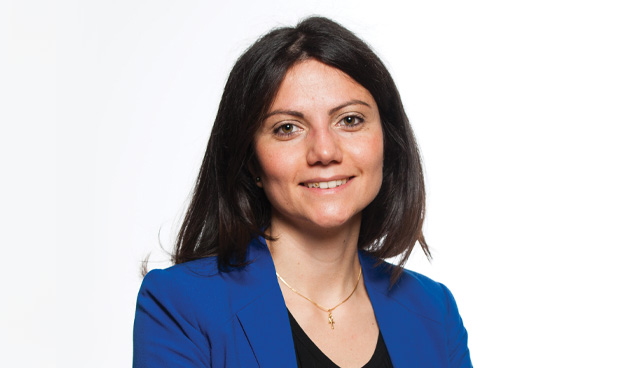
“We turn on a tap or flush the toilet and don’t think about what is happening before or after. Our infrastructure is underground, often in remote areas outside cities, and only professionals can access that infrastructure because of security reasons. This is of course something that is a negative element when we need to communicate because people don’t see us.”
“As water professionals, our members are seeing the growing impacts of climate change. Droughts are becoming more regular in Ireland, and this is also the situation in places such as Sweden and Denmark. We see droughts and also floods, which obviously affects quantity; increasingly, our experts want us to raise the link between these quantity problems and water quality. The European Commission recently published its new Climate Adaptation Strategy which makes the link between quality and the protection of water resources.
“Another element worth considering here is the possible conflict in the allocation over resources because of course there are different uses for water, each of which are very important to the functioning of our society. It is also important to look at priorities, especially when it comes to water and sanitation. Drinking water should be of priority for ensuring the human right to water.”
Chiaretti admits that the sector faces a communications problem, specifically at EU level, when it comes to the public understanding of the water sector. “I think it is fair to say that we are a sector that is taken for granted,” she says. “We turn on a tap or flush the toilet and don’t think about what is happening before or after. Our infrastructure is underground, often in remote areas outside cities, and only professionals can access that infrastructure because of security reasons. This is of course something that is a negative element when we need to communicate because people don’t see us. At EU level, it is difficult to communicate about the sector because we are just one actor in the water cycle.”
The European water sector invests €41 billion per year and directly employs 476,000 people. It also provides stabilisation when it comes to economic crises, Chiaretti says, because these are jobs that cannot be delocalised. The policy head does, however, admit that the sector suffers from a human resources gap, due to an ageing staff and a failure to attract young professionals for various reasons, including salary.
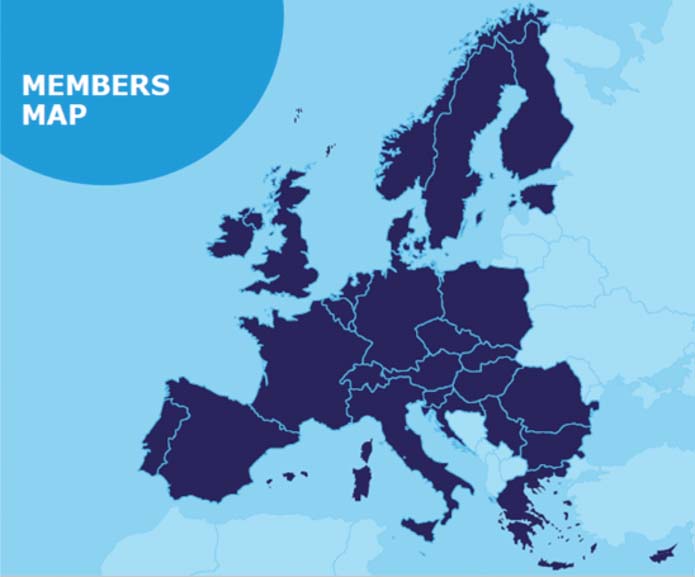
“This leads us to the importance of setting the right price for water services, a price that ensures the sustainability and affordability of water,” she says. “There is an intergenerational responsibility that needs to be taken into account when it comes to the level of service that we need to have in place for future generations. At the same time, we must strike a balance with affordability. We are in favour of cost recovery in order to carry out the necessary investment. We support the OECD ‘3Ts’ approach that promotes transparency of the various streams of funding, such as tariffs, transfers, and taxes. We also support all users contributing to cost recovery, including industry and agriculture.”
Concluding, Chiaretti looks to the future, including the threats to the sector and the opportunities to futureproof what is currently being built and planned: “We are a sector that needs to manage long-term assets in a fast-changing environment. This means that our infrastructure is planned to last for decades, but at the same time we need flexibility to respond and adapt and we need solid lifecycle data to adopt futureproof solutions.
“We are also working to reinforce the resilience of water services against security risks. We are talking about infrastructure that is classified as critical in almost all member states. We need to be resilient to malicious acts, but also to new threats such as cybersecurity ones. We have seen what happened in Florida, where a hacker tried to poison a community through the drinking water infrastructure. We also need to be aware of interdependencies in order to ensure resilience with the energy sector.”
10 challenges for water services in Europe for the next 10 years
- Protecting our water heritage
- Supporting the zero-pollution ambition
- Responding to the growing impacts of climate change
- Giving water its value in the circular economy
- Increasing resource efficiency
- Increasing the public understanding of the water sector
- Fostering sustainable economic growth and creating jobs
- Setting the right price for water services
- Managing long-term assets in a fast-changing environment
- Reinforcing the resilience of water services

